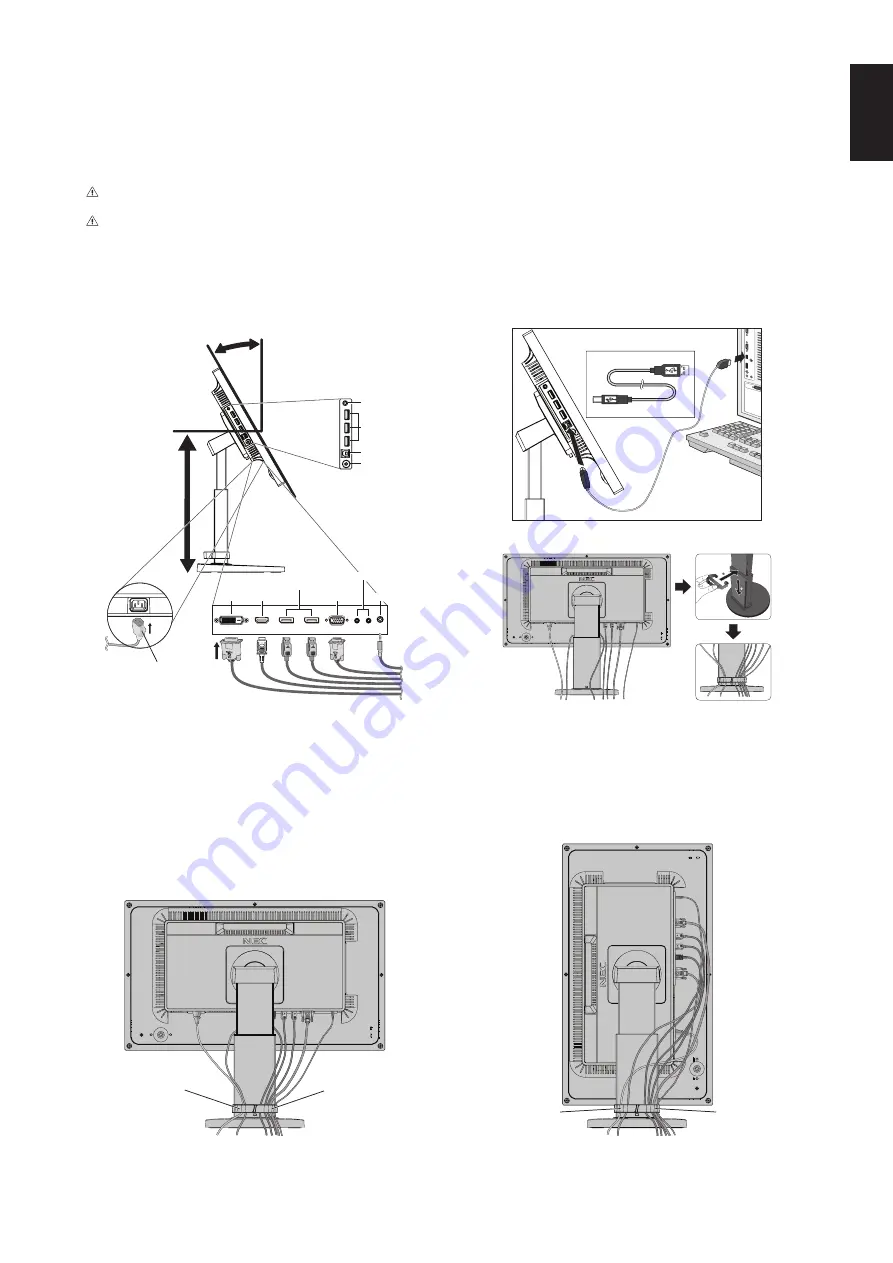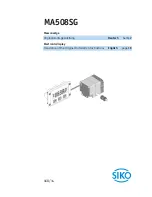
English-7
English
4. Connect all cables to the appropriate connectors (
Figure C.1
). When using the USB cable, connect the B type connector
to the USB upstream port on the right back side of the monitor and the A type connector to the downstream port on the
computer (
Figure C.1a
). If using the cord from a USB device, plug into the downstream port of the monitor.
5. When using an optional sensor, connect the stereo micro plug cable to the SENSOR (
Figure C.1
).
NOTE:
Incorrect cable connections may cause abnormal operation, damage display quality/components of LCD module
and/or shorten the module’s life.
CAUTION:
Do not bind the USB cable. It may trap heat and start a fire.
CAUTION:
Do not connect headphones to the monitor while you are wearing them.
Depending on the volume level, it may damage your ears and cause loss of hearing.
NOTE:
Use an audio cable without a built-in resistor. Using an audio cable with a built-in resistor turns down the sound.
NOTE:
Adjustment of the volume control as well as the equalizer to other settings than the center position may increase
the ear-/headphones output voltage and therefore the sound pressure level.
Figure C.1a
A Type
B Type
A Type
B Type
Figure C.1
Power cord
30° Tilt
DisplayPort IN/OUT*
2
DVI
HDMI
Highest
Stand
Position
Audio Input
USB 3.0 Upstream
ControlSync IN/OUT*
1
SENSOR
USB 3.0 Downstream
D-SUB
Headphone
Figure C.2
*
1
*
2
6. Place the cable holder onto the stand (
Figure C.2
).
Place the cables in the cable holder firmly and evenly (
Figure C.3
and
Figure C.4
).
7. Please check that you can still rotate, raise and lower the monitor screen after you have installed the cables.
Figure C.3
Figure C.4
Power Cord
DVI Cable
HDMI Cable
DisplayPort Cables
Mini D-SUB 15 pin Cable
ControlSync Cables
Audio Cable*
3
Power Cord
DVI Cable
HDMI Cable
DisplayPort Cables
Mini D-SUB 15 pin
Cable
ControlSync Cables
Audio Cable*
3
*
3
: ø 3.5 stereo mini plug.










































